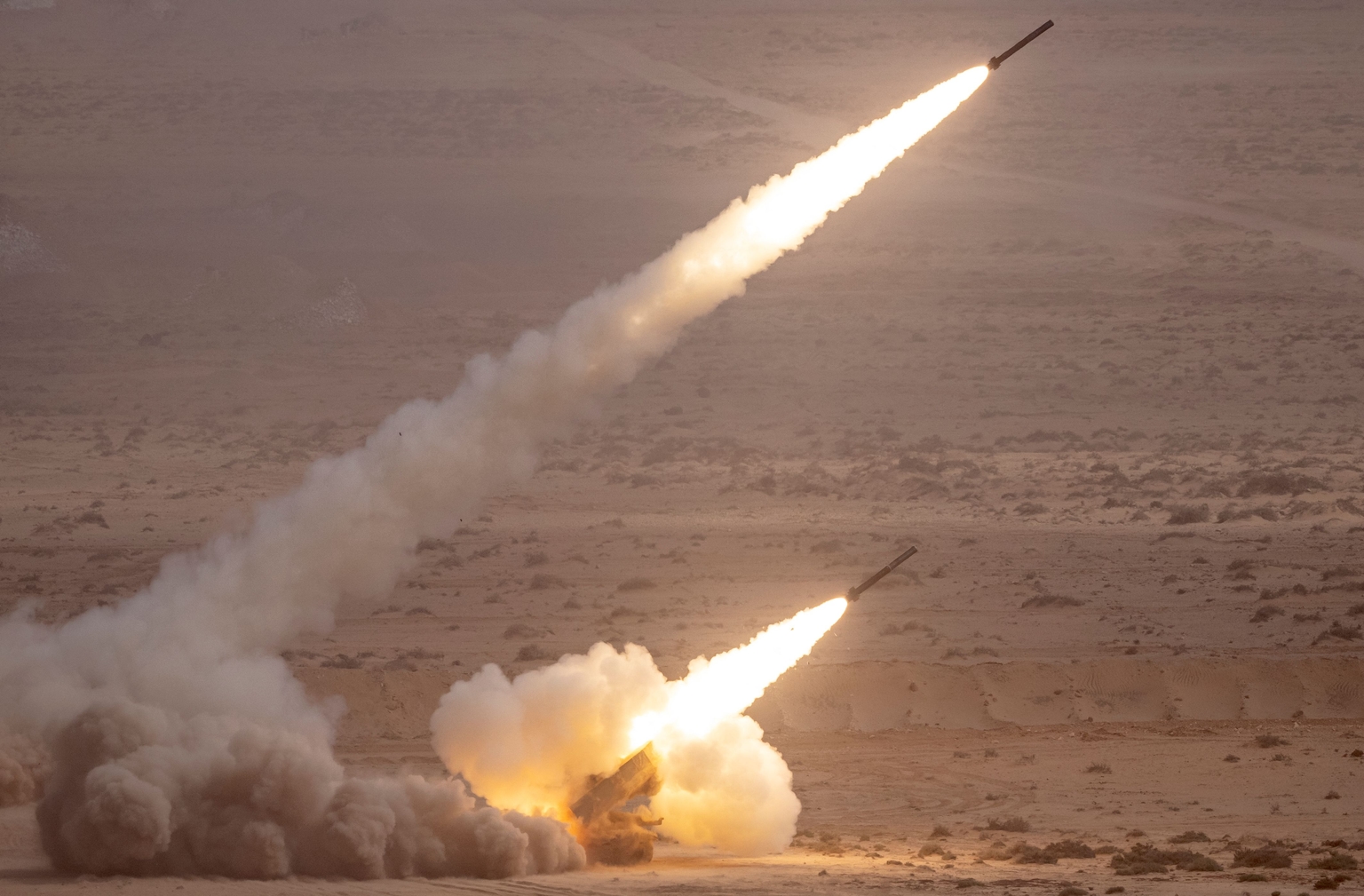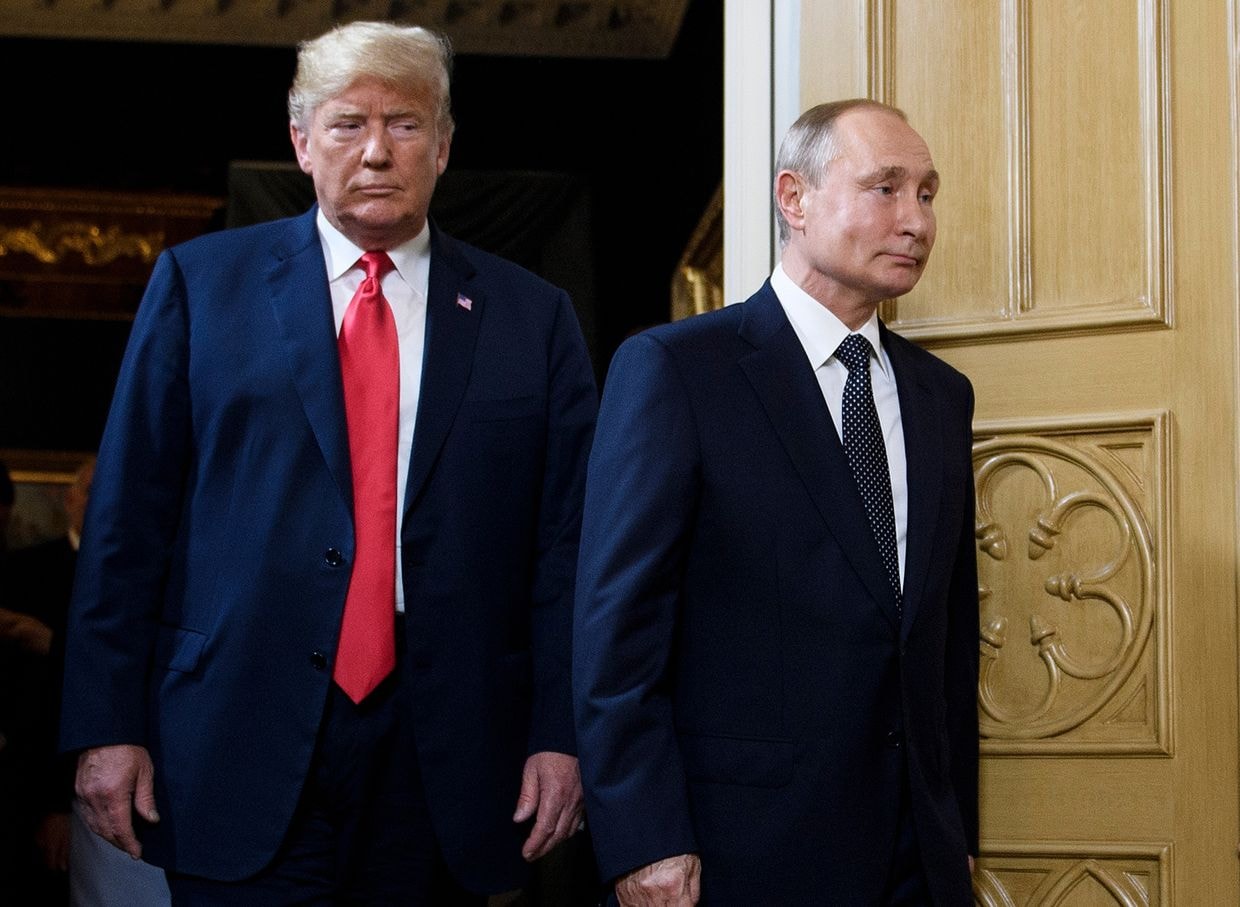Ukraine targets Russia’s ammunition depots, undermining its artillery advantage

It is an almost everyday occurrence in the Russian-occupied parts of eastern and southern Ukraine.
Russia’s ammunition depots blow up, with large fires erupting as tons of ordnance detonate for hours. Some of these incidents cause giant blasts with a radius of hundreds of meters.
Now that Ukraine has acquired advanced Western artillery and rocket systems, it has gradually begun a campaign to take out Russia’s key military infrastructure. Over the last four weeks, nearly 20 Russian ammunition depots in Russian-occupied Donbas and Ukraine’s south, including some of the largest, have been hit or completely destroyed.
As Russia continues with its slow but steady advance in Ukraine’s eastern region of Donbas, Ukraine’s military is working to undermine Russia’s overwhelming artillery power and disrupt its logistics deep in occupied territories.
Seek and destroy
Devastating strikes upon Russian command posts have become increasingly frequent since mid-June when Ukraine began using the first of four M142 High Mobility Artillery Rocket Systems, or HIMARS, provided by the U.S., nearly a week before their arrival in Ukraine was publicly announced.
On June 15, a massive explosion occurred near the city of Khrustalniy (formerly Krasniy Luch) in occupied Luhansk Oblast.
Explosions continued for days. According to satellite images, the blasts created a destruction zone spanning some 500 meters around the epicenter. The site was one of Russia’s largest ammunition depots, built after Russian forces occupied the area in 2014. In the Azotniy neighborhood in the northeastern part of Donetsk where Russia established ammunition depots through the city, successful attacks have continued on an almost daily basis.
On July 2, Ukraine’s military published a video showing an enormous explosion at another large depot in the city of Popasna in Luhansk Oblast that was being used to supply Russian units near Bakhmut and to the south of the Sievierodonetsk and Lysychansk. Two days later, another devastating blast destroyed a large depot in the city of Snizhne. Three more depots were also hit in Donetsk.
On July 5, another strike hit the Kamaz Center, a large truck repair shop that was being used as a Russian munition base. The Techsnab industrial base in the city of Makiivka was also destroyed on July 6, in which large amounts of stored munitions exploded. Missile strikes have also occurred in Ukraine’s occupied south. On June 14, Ukraine destroyed a depot in Nova Kakhovka, one of Russia’s key bases in Ukraine’s southern Kherson Oblast, occupied by Russia in the early days of the invasion. The same day, another large depot in occupied Kherson, near the city’s central railway station, was also hit.
Another attack on June 29 also severely damaged an ammunition depot near Izium in Kharkiv Oblast that was used by Russia’s 20th Combined Arms Army in its offensives in the region. And another strike on July 4, reportedly delivered by a HIMARS, destroyed one of four Russian military bases in Melitopol in Zaporizhzhia Oblast, a key Russian logistics center in Ukraine’s south.

An ammunition depot located near an airfield used by Russia’s forces continued detonating for days after the strike. Along with ammunition, Ukraine has also attacked a number of Russian command posts, transportation centers, and barracks, mainly in the occupied cities of Yasynuvata and Kadiivka (formerly Stakhanov).
Ukrainian strikes upon Russian facilities continue on a daily basis.
As a result, by July 7, Russia had lost most of its key ammunition depots, and many of its smaller depots in occupied Donbas. Notably, many key targets as much as 50-80 kilometers into Russian-controlled territory have been successfully destroyed.
This suggests that, along with Western-made rocket systems, Ukraine has also managed to improve its reconnaissance, situational awareness, and target indication, to the point of being able to identify targets even of medium importance deep in Russian-occupied areas.
Read also: How Western heavy weaponry can make a difference in the war in Ukraine
According to Russian military bloggers, such as the notorious Russian ultranationalist Igor Girkin, these “unpunished” Ukrainian strikes have already forced the Russian military to be more conservative with its artillery rounds, in preparation for a possible Ukrainian counter-strike in Donbas. In early July, another Russian military blogger Andrey Morozov (widely known as “Murz”) indicated growing “munitions hunger” due to Ukrainian attacks, not only in terms of 122-millimeter rounds but also 152-millimeter systems, which are also waning. Russia’s overwhelming artillery dominance, in terms of the number of pieces and its seemingly infinite supply of ammunition, is a key factor behind its painful advances in Donbas.
According to Ukraine’s data, Russia’s supply of artillery outnumbers Ukraine’s by 10 to 1. Before Ukraine acquired Western-provided NATO-standard 105- and 155-millimeter artillery systems and munitions, the disparity between rounds fired daily by Ukraine’s and Russia’s units in some cases reached 50 to 1,500, respectively, according to sources in Ukraine’s military.
The effect has been devastating.
On June 28, Ukraine’s top general Valeriy Zaluzhniy reported that Russia, just at the front line between Kharkiv Oblast and Sievierodonetsk in Luhansk Oblast, delivered 270 artillery strikes, firing nearly 45,000 rounds in one single day. The ongoing campaign in Donbas showed that artillery dominance compensates for the weak performance of Russia’s infantry.
As part of its tactics, Russian artillery devastates everything in its way, including dense urban areas, then allows infantry to advance through scorched ruins. And, as the Battle of Sievierodonetsk showed, Ukraine still has difficulty countering such concentrated artillery presence.
Read also: In Sievierodonetsk, fierce urban battle ongoing to exhaust Russia

Logistics in jeopardy
The arrival of HIMARS, even in such small quantities, has been much of a game-changer.
“Ukrainian forces are increasingly targeting Russian military infrastructure with indirect fire and U.S.-provided HIMARS systems deep in occupied territory,” said the Institute of the Study of War (ISW), a U.S.-based defense think tank, on July 4.
“The increased ability of Ukrainian forces to target critical Russian military facilities with Western-provided HIMARS demonstrates how Western military aid provides Ukraine with new and necessary military capabilities.”
Moreover, on July 7, Ukraine’s National Security and Defense Council secretary Oleksiy Danilov said Ukraine currently already had a total of nine HIMARS and “similar systems,” but that Ukraine would need dozens more.
The deployment of HIMARS has also let the Ukrainian military resume the wide use of Tochka-U ballistic missiles, which Ukraine had been reserving for the most critical operations. Many Russian ammunition depots have been destroyed with these missiles. The very presence of HIMARS, with their precise M30/M31 GMLRS rockets with an effective range of nearly 80 kilometers, is also having an indirect impact on Russian munitions logistics in the rear.
Due to the long effective range of HIMARS, Russia, severely dependent on railroad transportation, has to unload ammunition from trains much farther from the frontline, at a distance of nearly 100 kilometers in many cases.
Read also: As Ukraine withdraws from Sievierodonetsk, Battle of Donbas enters next phase
This stretches thin Russian ground lines of communications between front-line artillery units and munitions depots.
It also forces Russian forces to be increasingly dependent on the use of automobile transportation of munitions and supplies, which is less effective, inflexible, and slower with longer supply lines. In an ideal situation, the U.S.-provided advanced weapons systems will make it impossible for Russia to keep up the necessary pace of providing its troops with enough ammunition and supplies.
No matter how many millions of artillery rounds Russia still has in its territory thousands of kilometers away from Ukraine.
“One must clearly understand that the Soviet Union produced munitions enough to wage a thousand years of war,” says Igal Levin, a Ukraine-born Israeli defense expert.
“But — if all those forwarded bases, depots, repair facilities, all of the logistics chains are destroyed — they will have to deal with the need to bring supplies from beyond the Ural Mountains, then be thinking how to store and distribute them, how to bring munitions to artillery."
“So even if this does not shut up the Russian artillery completely, reducing its ability to deliver fire by 50%, to 3,000 rounds a day or even less, will be of a considerable effect on the battlefield.”
___________________________________
Note from the author:
Hello! My name is Illia Ponomarenko, the guy who wrote this piece for you.
I hope you found it useful and interesting. I work day and night to bring you quality stories from Ukraine, where Russia is waging the biggest war in Europe since WWII. My little homeland, Donbas, is now the site of the worst fighting. We are helping to keep the world informed about Russian aggression. But I also need help from every one of you — to support Ukrainian wartime journalism by donating to the Kyiv Independent and becoming our patron.
Together, we can help bring peace to Ukraine.










